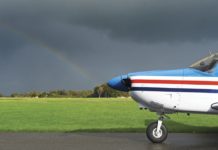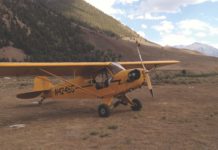One of the reasons many fly personal aircraft is to travel. Even simple, slow airplanes can be used for personal and business transportation, within limits, and they’re the preferred solution for many. And when trying to get from one location underserved by the airlines to another, there’s really no better solution.
There’s a downside, too: The flexibility and responsibility of flying personal aircraft on a schedule can mean the pilot tries to squeeze too much into a given day. A typical schedule might go something like this: A breakfast meeting at a hotel, then airborne by 10:00 a.m. local time. After a 250-nm flight, there’s a luncheon meeting, followed by a facility tour in the afternoon and a 4:00 p.m. takeoff for a 500-nm flight. After landing more than three hours later, check into another hotel, grab something for dinner and prepare for the next day, which likely will resemble the first one. Live, work and fly on a schedule like this—which ignores time-zone changes—and you likely will be a tired pilot by the end of the week.
As the sidebar below details, fatigued pilots aren’t at their best. But the problems created by fatigue likely have nothing to do with our ability to manipulate an airplane’s controls, though that can happen, too. Instead, fatigue is more likely to result in poor decisions, like stretching fuel or tackling poor weather. Or a decision to take off in the first place, when we’re really too tired.
It’s a multiple-edged sword: The very flexibility and utility of personal aircraft means we’ll use them to make the best use of our time. If that means multiple flights, a variety of appointments and meetings, plus time zone crossings, that’s what we’ll do.
But that can be an exhausting schedule. One solution might be to ensure enough sleep each night to minimize fatigue. Another might be to bring along another pilot to share the flying duties. But the one thing you don’t want to do is fly when you’re too tired to stay awake. Here’s an example of what can happen.
Background
On September 22, 2012, at about 0150 Eastern time, a Cessna 172S Skyhawk SP was substantially damaged following a collision with trees and terrain near Land O’Lakes, Fla. The solo private pilot was fatally injured. Night visual conditions prevailed. The flight originated from Pensacola, Fla., at about 2144 Central time the previous day.
At 0130, the pilot contacted ATC, reporting about 52 nm north-northwest of his destination, at 7500 feet msl. At 0134, ATC approved a VFR descent at pilot’s discretion but at 0149, noticed the airplane had descended below 1000 feet msl, 15 nm northwest of the destination airport. The pilot did not respond to ATC queries and continued in a gradual descent until radar contact was lost. At 0243, a police helicopter located the wreckage. There were no known witnesses to the accident.
Investigation
The pilot held an FAA private pilot certificate with ratings for airplane single-engine land, multiengine land and instrument airplane. He also held a Swiss-issued airline transport pilot certificate, with type ratings for the Airbus A320 and A330. He reported 13,480 hours total time on an FAA third-class medical certificate application in August 2011. The pilot was a captain for Edelweiss Air, based in Zurich, Switzerland, and a Swiss citizen.
The pilot was flying the airplane from Boulder, Colo., to Tampa after its recent purchase. The accident site was in a pasture about 17 nm north-northwest of the destination airport.
The cockpit and cabin sections of the airplane were consumed in a post-crash fire. The wreckage path was oriented on a 160-degree heading and was about 400 feet in length. The distance from the first ground impact to the main wreckage was approximately 250 feet.
The wing flaps and their drive mechanism were observed in the retracted position. Control cable continuity was established from the cockpit controls to the rudder and elevators. The aileron cables exhibited overload separations, as did the wing flap cables. The engine-driven fuel pump was removed and actuated by hand; fuel was expelled when manually operated. Nothing was observed during the investigation that would have precluded the engine from making power prior to initial impact.
The NTSB conducted a comprehensive examination of the pilot’s itinerary and recent activities, beginning nine days before the accident. That review revealed he flew a five-day international trip as captain for his airline and returned to Zurich three days before the accident. About four hours later, he flew as a passenger to Colorado.
On the day before the accident, the pilot began the first of three legs of a cross-country flight, with the third leg being the accident flight. He was awake for about 18 hours at the time of the accident, with stops only for food and airplane servicing.
Over the nine-day period before the accident, the pilot made three Atlantic Ocean crossings. According to the NTSB, “These multiple and frequent time zone crossings would result in circadian disruption and would have diminished the pilot’s ability to obtain restorative sleep during this period, which, in combination with the pilot’s extended time awake on the day of the accident, would have caused the pilot to be in a fatigued state. The circumstances of the accident and his fatigue-inducing schedule in the preceding days indicate that the pilot most likely fell asleep during the initial descent for landing, and the airplane subsequently descended into the trees and terrain.”
Probable cause
The National Transportation Safety Board determined the probable cause(s) of this accident to include: “The pilot’s decision to continue the cross-country flight while fatigued, which resulted in him falling asleep during the initial descent for landing.”
If you’ve flown on a schedule, you likely have been fatigued in the cockpit. Closing your eyes for a few seconds seems to bring some relief, so you try it again. Between the aircraft’s noise, vibration and motion, plus ATC in your headset, you presume it’s not easy to fall fast asleep. And all you really want is a short “cat nap.” That can’t have any adverse outcome, can it?



